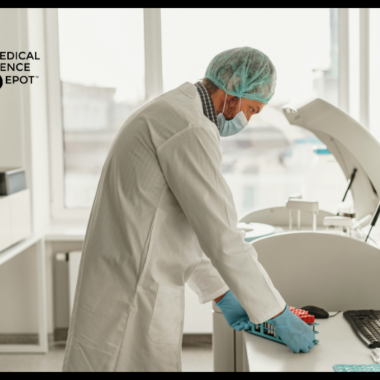It is no secret that the healthcare sector was stretched overwhelmingly thin through the pandemic — and is still struggling to recover. The trend of worker attrition in the medical and science fields continues, with job dissatisfaction, outdated equipment, stress, and burnout as a few top reasons for leaving. Fortunately, several efforts are underway to improve working conditions and environments for healthcare employees – here is one example.
In today’s healthcare landscape, staff satisfaction isn’t just a feel-good metric; it directly impacts the bottom line. When good employees leave organizations, there isn’t just the incalculable loss of expertise. There are costs associated with recruiting, hiring, and training a new employee — in addition to filling in gaps with expensive contract workers. It’s no wonder that staff retention in healthcare tops the list of industry challenges.
The financial implication of poor employee retention in healthcare is as concerning, with the average cost of replacing an employee ranging between six to nine months of that individual’s salary. For a specialized healthcare professional, the costs are even higher, reaching up to 200% of their annual salary. As a result, hospitals are losing millions of dollars each year due to high turnover rates, with the average hospital losing $7.1 million in 2021 alone according to Becker’s Hospital CFO Report.
Why is retention an issue in healthcare?
There are many reasons that clinicians and other healthcare personnel are heading for the doors. Long hours, lack of flexibility, and overwhelming stress are common factors contributing to burnout. These combine with the fact that many are spending less and less time doing what they went into medicine for—spending time with patients. Rather than focusing on patient care, clinicians often find themselves inundated with computer work, seemingly endless clicks, and time-consuming administrative tasks, spending an average of 15.6 hours per week on non-clinical duties.
The U.S. Surgeon General’s Advisory on Building a Thriving Health Workforce points to inefficient workflows, burdensome documentation requirements, and inconsistent protocols that exacerbate the exodus. These can lead to both negative patient outcomes and diminished job satisfaction.
Sonographers know these issues all too well. With 81% of health systems in the US reporting radiology technologist shortages, burnout is a very real concern. Additionally, due to the nature of their work, 90% of sonographers experienced work-related musculoskeletal disorders.5 Streamlined ultrasound workflows with fewer clicks are one part of the solution.
What are hospitals doing to retain staff?
Efficient workflows and standardized protocols can go a long way to ease burdens on healthcare teams, and ultrasound workflows are one area where improvements may lead to better staff satisfaction.
Thanks to advances in ultrasound digital tools and AI-enabled protocols, non value-add tasks are becoming automated and simplified. The ability to easily flow data and create reports results in fewer clicks — and means that care teams can spend more time focusing on the patient rather than the platform.
The echo lab at Mount Sinai Medical Center has used GE HealthCare’s ViewPoint™ 6 software to standardize ultrasound reporting and improve efficiency. The flow of information has been streamlined and improved according to cardiologist Dr. Christos Mihos, director of Mt. Sinai’s echo lab. Mihos notes, “It allows us to get through the studies that we need and treat the patients in a timely manner. We can then easily provide the referring docs, whether they’re cardiologists, surgeons or structural interventionalists, with the information that they need quickly and efficiently.”
An additional challenge for sonographers is when ultrasound machines aren’t standardized and consistently updated. Operators need to know that when they start an encounter with a patient, they won’t be left trying to work with an unfamiliar or outdated interface. Fleets of units dispersed across locations that aren’t all updated consistently cause lost time and frustration for both care team and patient. The advent of remote fleet management addresses the challenge of inconsistent ultrasound workflow and machine configurations across multiple locations leading to improved efficiency.
Fostering collaboration and connection
Many clinicians work in several locations and are not consistently connected to peers, colleagues, mentors and supervisors. This lack of connectedness can impact everything from training and growth to job satisfaction. Again, collaboration technology like GE HealthCare’s Digital Expert Connect can help foster these connections and support workers spread out geographically throughout a system.
Imagine a practitioner in a remote rural clinic easily consulting with a specialist at an academic hospital. The patient doesn’t have to risk travel to get the care she needs and she doesn’t have to wait for the expert to travel to her.
Interoperable, human-centered technology
For healthcare organizations, employee retention is a problem. In this resource-constrained environment, improving staff retention in healthcare organizations is critical for patient care, effective and efficient operations, and cost controls.
Healthcare institutions would be well served to heed the advice from the 2022 Surgeon General’s Advisory which, among other solutions, suggests, “Reducing administrative and other workplace burdens helps health workers make time for what matters. This must include reducing administrative and documentation burdens, ensuring health information technology that is human-centered, interoperable, and equitable.”
The Medical and Science Depot (MSD) operates on a solid foundation of promoting the highest quality medical equipment, products, and services and providing expert and professional assistance and support. With the help of MSD, medical staff and teams can achieve improved job satisfaction and performance. Discover how many ways our Medical and Science Depot helps medical professionals meet with success! Call us at 864.982.0460 or find us on Facebook.













